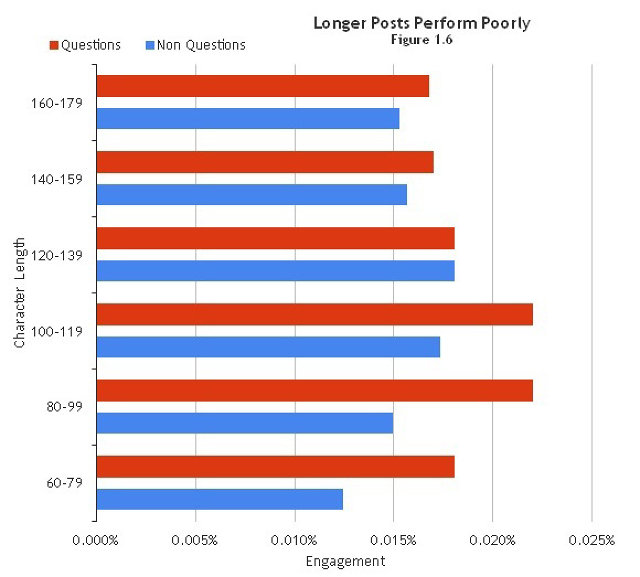
Just how many people are active in social media is? A staggering 72% of all Internet users. That’s how big social media is, going widespread and mainstream that up to 93% of marketers are using it to promote their brands, products and services. In a fast evolving marketplace, business owners need to utilize effective channels to reach out to targeted customers and social media goes all the way up as the best channel for engaging with your audience.
92% of business owners who have already embarked on a formal social media campaign claim that social media has already helped their businesses. They have realized the benefits of this digital marketing platform that they are actually putting in more of their marketing budgets into social media. Among the many facets of social media, marketing to discussion groups would be the best channel to reach out and connect with highly targeted audiences – those who have greater likelihood of interest towards your products and services. The following will give you an insight of the best practices on how you can effectively use this channel for your business.
1. Carefully Choose the Right Social Media Channels
But before you jump right in and start marketing to social media groups, you much first carefully choose which social network to have a presence in. Each social network has its own unique attributes and features that may be completely different from others. What works for one may not work for another. So, to avoid wasting resources and get totally disappointing results, your business need not be present in all social network – only those that will work with your business.
The following provides an overview of the discussion groups among the top social media channels to give you an insight of what to join and what to build a community in.
- Google+ Communities
Relatively the younger one among other social media groups, Google+ Communities has experienced staggering growth since it was officially launched back in December 2012. One of the greatest benefits this particular social media group offers business owners is the ability to generate business authority and greater branding by allowing them to engage in these communities using their own business page profile.
As a business, you can also create and build your own community according to categories and topics that are relevant to your products, services or industry. Your community page can be linked to your business in the “About This Community” section so members can learn more about your business. In a similar manner, visitors to your business page can also learn about and join your communities that they will be interested in.
- Facebook Groups
As the largest social media network, participating in the Facebook Groups communities will be to your business’ greatest advantage. You can join groups related to your industry or business and engage with members, many of which may be viable potential customers interested in your products or services. You can also create and build your own community through Facebook Groups and attract highly targeted audiences – many of whom may already be actively searching for what you might offer them.
Unlike Google+ where you can engage with group members as a business page, you can only interact with members in a Facebook group through your own personal profile. The key to success here is to interconnect your official business page to your personal profile so people can check you and your business out every time you post something on the group or pin it on top for everyone to see – a feature available to you as the group owner or administrator.
- LinkedIn Groups
Google+ and Facebook caters to mostly general types of social network users. But if you’re targeting professionals, executives or business owners, then LinkedIn would be the ideal channel for you. Joining LinkedIn Groups will help you connect and build relationships or even partnerships with these people – who have the most likelihood of becoming your customers.
A great thing in LinkedIn Groups is that you can communicate directly with anyone from the group you are both connected with. Like Facebook, you can create your own group through your personal profile, although you can use the Featured Groups section to feature the groups that you own and belong to. One of the greatest benefits of being the group owner is that you can send emails directly to any of your group members, which you can use for sending group announcements – which you should limit to topics your groups are focused on.
2. Clearly Establish the Goals and Objectives of Your Social Media Efforts
Once you’ve chose the right platform for your social media group, the next step is to establish the goals and objectives of your marketing efforts through these groups. Goals can range from creating brand awareness to generating leads and conversions. It can be any goal for that matter but what’s more important is that you set a sensible goal as businesses who do so are those who benefit the most from their social media strategies.
Don’t fall into the mistake of thinking that generating more group members and social media followers should be the main focus of your social media marketing efforts. While they are very important aspects indeed, your ultimate goal should focus more on conversion – either generating leads or even new customers.
3. Keep Social Media Social
Businesses who fail in social media are those treat this digital marketing channel just like any traditional marketing tool – where they think generating customers is a simple post-an-ad-and-walk-away thing. They have taken away the “social” element in social media, without clearly understanding this channel is more than just simply promoting brands or businesses but in actually engaging with other social network users.
The key to success in social media marketing is to build relationships and generate engagement with targeted audiences from your social media groups who have the most likelihood of becoming potential customers. How do you do this? Facebook teaches us the way to driving engagement after learning more about it from a study they conducted back in 2012. The study concluded that the most successful pages on social media sites are those that does not directly promote their brand but those who post content that is related to the brand — but does not directly talk about the brand.
4. Keep Your Posts Brief, Precise and Concise
In social networks, you’d see posts as long as full-length articles while some are as short a single line with few characters. So which length of post would be most effective? According to studies, the shorter your posts are, the better response and engagement it will generate. Twitter already have the right idea, limiting tweets to a maximum of 140 characters. Statistical studies show however, than limiting tweets to less than 100 characters will result in up to 17% better engagement with targeted audiences.
The same principle applies to other social networks as well, particularly when trying to generate engagement from social media groups. At Facebook, studies show that posts perform poorer in generating engagement as they grow longer, with posts and questions written within 100-119 characters generating the best results. At Google+, the magic number is to limit posts to 60 characters if you want to generate better engagement.
5. Moderated Sharing
Just like everything, too much of everything would definitely spoil the fun, and the same principle applies to the number of posts you share in your social media groups. In Facebook, up to 28% of targeted audiences will unlike a business page because of too much posts.
If we apply this principle to social media groups, you better don’t overdo the posting or else you will be booted or banned by the admin if you do so. A good rule of thumb as per our own experienced is at-least 2-3 times a week.
6. Respond to Both Positive and Negative Feedback
Engagement at social media groups also means responding to comments and feedbacks from other social network users within that group – whether the feedback is negative or positive. Always respond to positive feedback and clearly show your appreciation by thanking them, or even rewarding them with perks. Do not delete negative feedback although you might be itching to hit the delete button from the complaint or nasty remarks someone posted. Instead, treat it as constructive criticism and respond with a resolution or a commitment to improvement.
7. Use Videos, Images and Links on Your Social Media Marketing
Visuals are key elements to engagement success at social media marketing, so it would be to your advantage to spice up your posts and shares at these social media groups with videos, images and links. Adding images to your Facebook posts will generate 100% better engagement that simply posting purely text posts.
Although YouTube is already integrated to Google+, you can still generate better results by posting useful links on your groups, subject to the approval of the group admin. Even LinkedIn is going through the visual path, with posts containing images generating five times more engagement from targeted audiences.
Just like the email groups, online bulletin boards, and forums of old, discussion groups at social media networks are still one of the best ways of marketing to targeted audiences. However, business owners and digital marketers should learn that the key to success is engagement – the social element in these networks – and following the best practices presented here.
Jomer B. Gregorio is a well-rounded expert when it comes digital marketing. Jomer is also known as a semantic SEO evangelist and practitioner. Check out our Digital Marketing Services today and let us help you in achieving positive and profitable results for your business.

